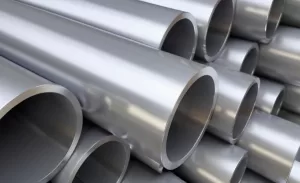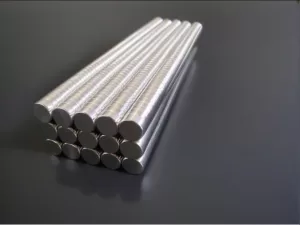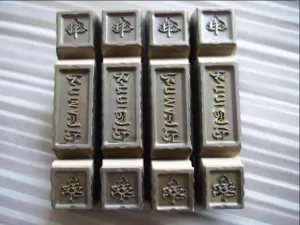March 22, 2025
Types and applications of plastic mold materials
The rapid growth of plastic products has driven the plastic mold industry forward. This rising demand encourages continuous innovation in high-performance mold materials.
In recent years, Chinese manufacturers have developed new materials, improved metallurgical quality, optimized heat treatment processes, and extended mold lifespan. These advancements have led to the production of high-quality, cost-effective mold materials. As a result, the manufacturing sector has gained significant economic benefits.
Mold steel remains the main material for plastic molds. However, manufac
turers also use non-ferrous alloys, steel-bonded carbide, and low-melting-point alloys, depending on different molding processes.
1. Mold Steel
Plastic mold steel falls into five main categories:
Carburizing plastic mold steel
Pre-hardened plastic mold steel
Age-hardening plastic mold steel
Corrosion-resistant plastic mold steel
Non-quenched and tempered plastic mold steel
Among these, carburizing, pre-hardened, and age-hardening steels are the most common.

1.1 Carburizing Plastic Mold Steel
Carburizing plastic mold steel contains 0.10% to 0.25% carbon. After annealing, the steel stays soft, remains highly plastic, and resists work hardening. This makes it suitable for cold extrusion of mold cavities.
After carburizing, manufacturers quench and temper the steel. This process significantly increases surface hardness, which enhances the mold’s wear resistance and extends its lifespan. This type of steel works best for molds that need high surface hardness and strong core toughness.
1.2 Pre-Hardened Plastic Mold Steel
Manufacturers pre-harden this steel to achieve hardness levels of 10HRC, 20HRC, 30HRC, and 40HRC. It offers excellent machinability. Engineers can machine cavities directly without additional heat treatment, reducing production costs and saving time.
Common materials include P20, P4410, P20BSCa, and SM1. Their hardness ranges from 32 to 40HRC. These materials are ideal for high-volume production and mirror-finish molds.
Chinese steel 3Cr2Mo, equivalent to AISI P20, is a widely used pre-hardened steel. It comes hardened to 30–35HRC. This steel suits large, high-precision molds, such as TV shells and washing machine casings.
1.3 Age-Hardening Plastic Mold Steel
Manufacturers design age-hardening steel for molds that need high hardness and minimal deformation. They machine the steel in a tempered state. After that, they perform aging treatment for several hours. This process increases hardness and improves mechanical properties. The deformation stays within 0.01% to 0.03%, which makes it perfect for high-precision molds.
For high-end molds, manufacturers perform aging treatment in a vacuum furnace or glow aging furnace after mirror polishing.
China produces low-nickel age-hardening steels like 25CrNi3MoAl, SM2 (Y20CrNi3IMnMo), PMS (10Ni3MnCuAl), and 06 steel (06Ni6CrMoVTiAl).
1.4 Corrosion-Resistant Plastic Mold Steel
Molds that process PVC, fluoroplastics, and flame-retardant plastics need corrosion resistance. These materials release corrosive gases. Traditional solutions include chrome plating or using stainless steels like 3Cr13, 4Cr13, and 9Cr18.
However, traditional stainless steel machines poorly and deform significantly during heat treatment. To solve this, Chinese researchers developed PCR (0Cr6NiCu3Nb). This is a martensitic precipitation-hardening stainless steel. It provides better corrosion resistance and mechanical performance. PCR steel performs well in chlorine- and fluorine-based environments, making it ideal for flame-retardant plastic molds.
2. Non-Ferrous Alloys
2.1 Copper Alloys
Beryllium bronze (e.g., ZCuBe2, ZCuBe2.4) is a common material for plastic molds. It supports casting complex molds at lower costs and faster production cycles. After solution treatment, the alloy becomes highly machinable. With aging, it reaches hardness levels of 40–42HRC. This makes it ideal for blow molding and injection molds.

2.2 Aluminum Alloys
Aluminum alloys offer low density, excellent thermal conductivity, and easy machinability. These properties outperform steel in certain areas. Cast aluminum-silicon alloys like ZL101, ZL201, and ZL302 are popular choices. They work well for complex, corrosion-resistant plastic molds. Using aluminum alloys helps manufacturers shorten production cycles and reduce costs.

2.3 Zinc Alloys
Zn-4Al-3Cu eutectic zinc alloys enable smooth, complex mold cavities at lower costs and faster turnaround. However, they lack high-temperature strength and degrade over time. This makes them more suitable for short-term or prototype molds.

3. Steel-Bonded Carbide
Steel-bonded carbide combines tough steel with hard carbides like titanium carbide and tungsten carbide. Manufacturers produce it using powder metallurgy. This material offers excellent wear resistance and toughness. It’s ideal for high-demand plastic molds.

4. Low Melting Point Alloys
Low melting point alloys, like WB58% bismuth and WSn42% tin, enable rapid blow mold cavity casting. This method saves steel, reduces labor, and cuts production time. It provides an efficient alternative for prototype and short-run molds.

5. Conclusions and Recommendations
1️⃣ Develop High-Performance Materials: Focus on creating long-lasting, cost-effective, and high-efficiency alternatives to expensive imports. This approach brings clear technical and economic advantages.
2️⃣ Accelerate Promotion and Adoption: Strengthen the link between research and production. Improve material information exchange to help the industry adopt new materials faster.
3️⃣ Expand Deep Processing Capabilities: Mold manufacturers need various material shapes and sizes — round steel, flat steel, thick steel, and modules. Deep processing ensures more versatile, ready-to-use materials.
4️⃣ Boost Specialized Production: Set up dedicated mold material plants to improve equipment capabilities and enhance production efficiency.
5️⃣ Professionalized Supply Chains: Most current distributors lack specialization. Establish large-scale, dedicated mold material sales companies to ensure better quality and consistency.